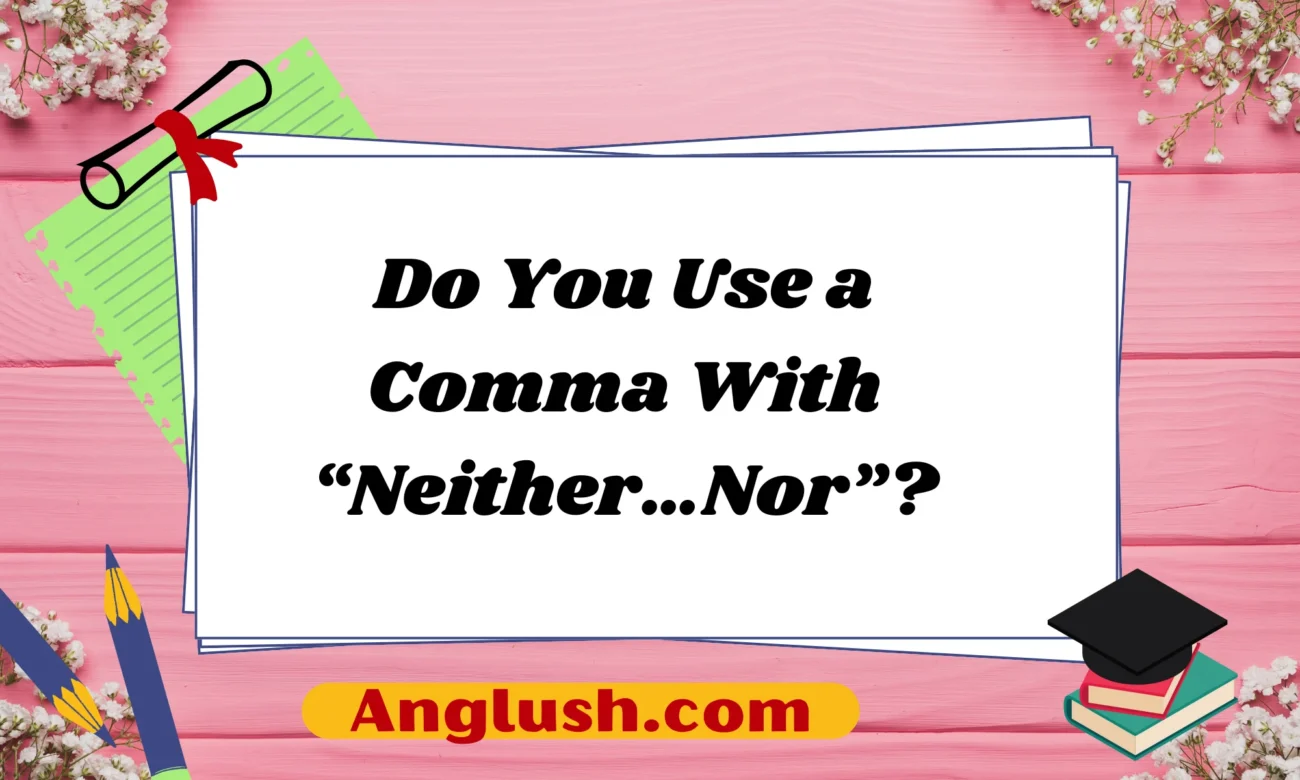Introduction
The phrase “neither…nor” is commonly used in English to indicate that two or more things are not true or do not happen. It’s a key component of negative sentence structures and can be found in both formal and informal writing. However, one of the most frequently asked questions about “neither…nor” is whether a comma should be used with it.
This article will explore the correct punctuation rules for “neither…nor”, including when commas are necessary, when they should be avoided, and how sentence structure impacts comma usage. We will also provide clear examples to help you understand how to punctuate sentences correctly.
Understanding “Neither…Nor”
“Neither…nor” functions as a correlative conjunction, meaning it connects words, phrases, or clauses that share the same grammatical structure. The phrase indicates a negation of both elements it links.
Examples of “Neither…Nor” in Sentences:
- Neither the manager nor the employees were aware of the policy change.
- She is neither interested in the proposal nor willing to negotiate.
- Neither my brother nor I have been to Italy.
As seen in the examples above, “neither…nor” establishes a negative relationship between two subjects or objects.
When Should You Use a Comma With “Neither…Nor”?
Whether you use a comma with “neither…nor” depends on sentence structure and clarity. Below, we explore the main punctuation rules.
1. Do Not Use a Comma in a Simple Sentence
If “neither…nor” connects two simple elements (such as nouns, pronouns, adjectives, or verbs), a comma is not needed.
✅ Correct: Neither the cake nor the cookies were baked properly.
❌ Incorrect: Neither the cake, nor the cookies were baked properly.
✅ Correct: He neither called nor texted.
❌ Incorrect: He neither called, nor texted.
2. Use a Comma in a Complex Sentence for Clarity
If “neither…nor” appears in a sentence with multiple clauses, a comma might be needed to separate independent clauses or improve readability.
✅ Correct: Neither did she want to stay, nor did she feel comfortable leaving.
✅ Correct: Neither the students, who were exhausted from studying, nor the teachers, who had been working late, wanted to stay longer.
In these examples, the commas help distinguish clauses and prevent confusion.
3. Use a Comma When “Neither…Nor” Appears in a List
If “neither…nor” connects three or more items in a list, commas can be used to improve readability.
✅ Correct: Neither the manager, the employees, nor the customers were satisfied with the new policy.
✅ Correct: She enjoys neither coffee, tea, nor soda.
The commas separate list elements, making the sentence easier to read.
Common Mistakes to Avoid
To ensure proper punctuation, avoid these common mistakes when using “neither…nor”:
1. Adding a Comma Before “Nor” in a Simple Sentence
❌ Incorrect: She neither likes, nor dislikes the movie.
✅ Correct: She neither likes nor dislikes the movie.
2. Forgetting to Maintain Parallel Structure
“Neither…nor” requires parallel structure, meaning both parts should follow the same grammatical form.
❌ Incorrect: He is neither interested in swimming nor to hike.
✅ Correct: He is neither interested in swimming nor in hiking.
3. Using “Neither” and “Nor” Incorrectly in Sentences
Remember that “neither” should always be followed by “nor”, not “or”.
❌ Incorrect: She wants neither pizza or pasta.
✅ Correct: She wants neither pizza nor pasta.
10 Common Texting Examples Using “Neither…Nor”
Here are 10 easy-to-use, Google-optimized examples of “neither…nor” for texting and casual communication:
- “I’m neither hungry nor in the mood to cook. Let’s order takeout?”
- “Neither of us remembered the meeting time, so we were both late!”
- “She’s neither coming to the party nor answering my texts. Strange.”
- “I neither have time nor patience for this drama right now.”
- “Neither my laptop nor my phone is working. Bad day!”
- “He’s neither funny nor interesting. Why do people like him?”
- “I neither agree nor disagree. I just don’t care.”
- “Neither the weather nor my mood is great today.”
- “Neither of us has seen that movie. Wanna watch it together?”
- “Neither your message nor my reply is getting delivered. Maybe bad signal?”
These texting examples demonstrate how “neither…nor” is used naturally in everyday conversations.
Final Thoughts on Comma Usage with “Neither…Nor”
In summary, whether you use a comma with “neither…nor” depends on the complexity of your sentence:
- No comma is needed in simple sentences.
- A comma may be necessary in complex sentences for clarity.
- Use commas when listing three or more items to enhance readability.
By following these rules, you can ensure that your writing remains grammatically correct and easy to understand.

